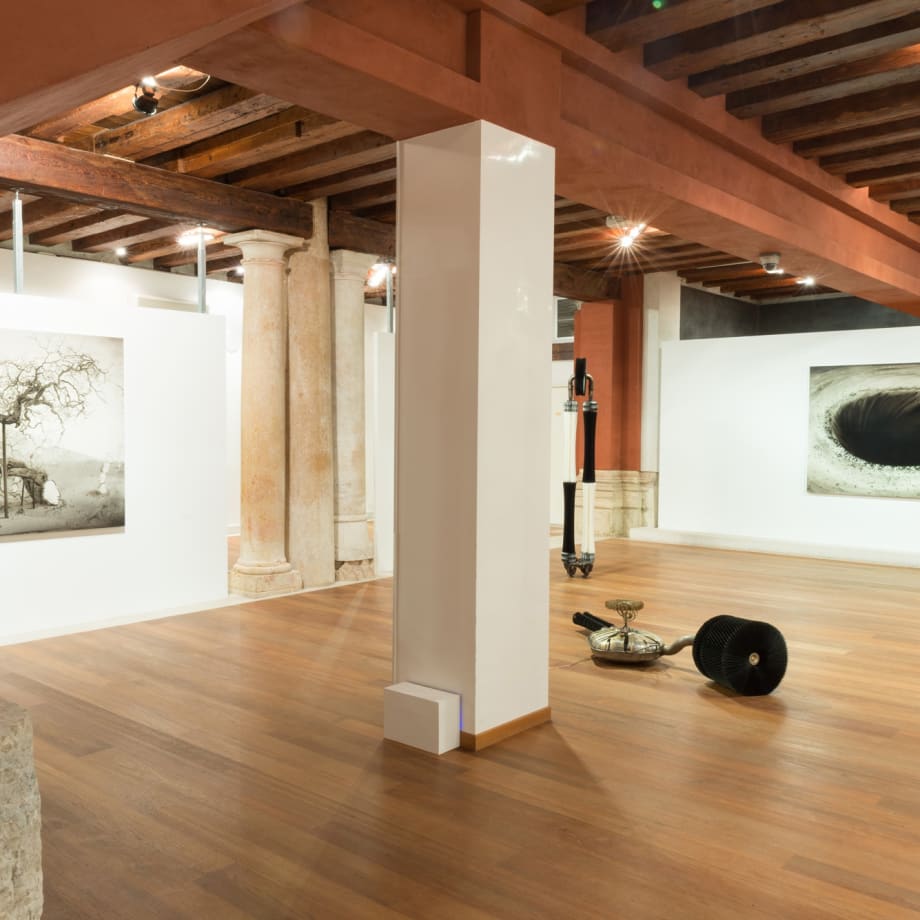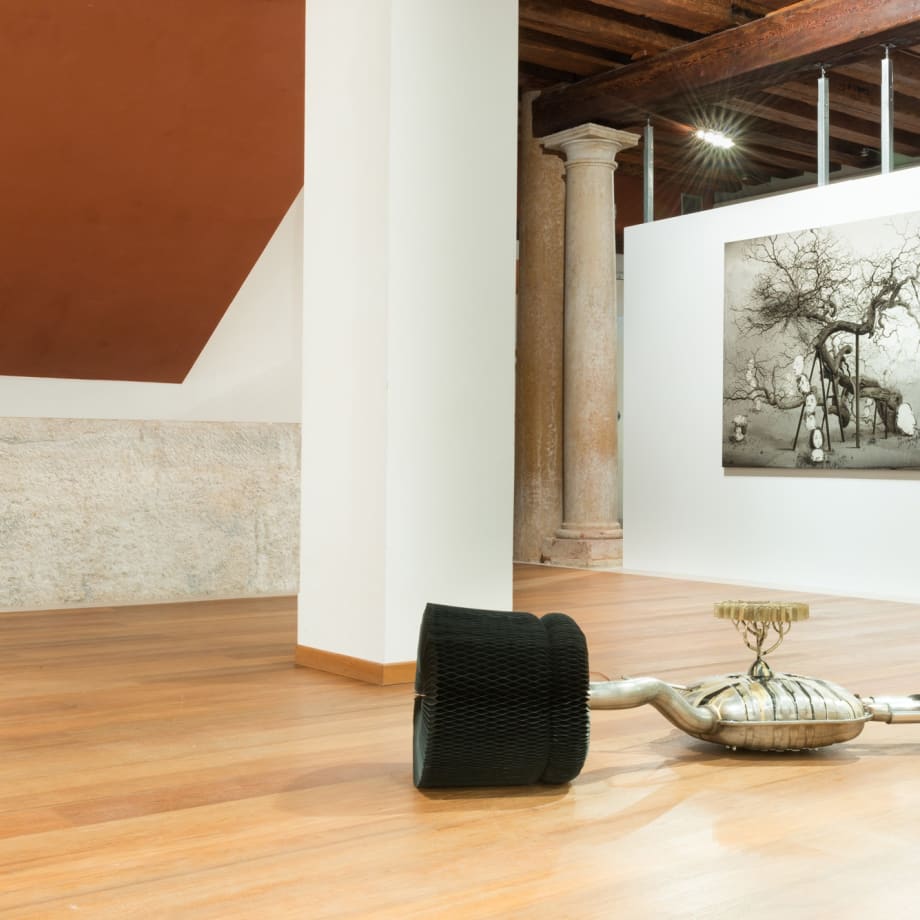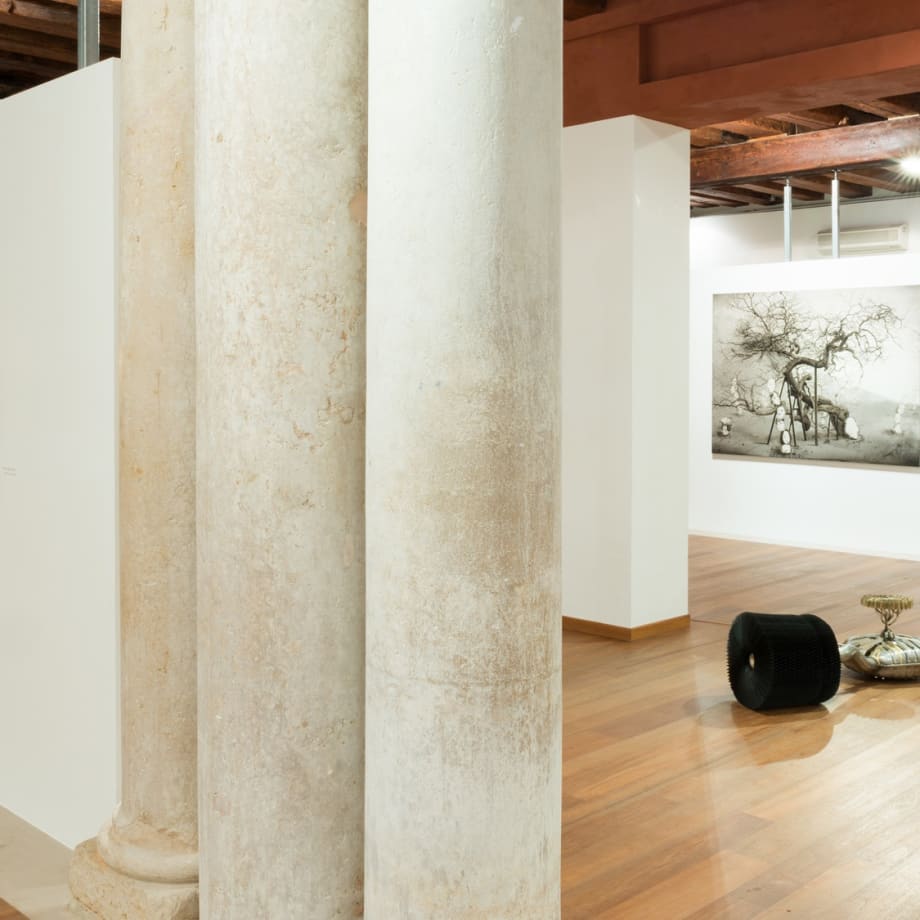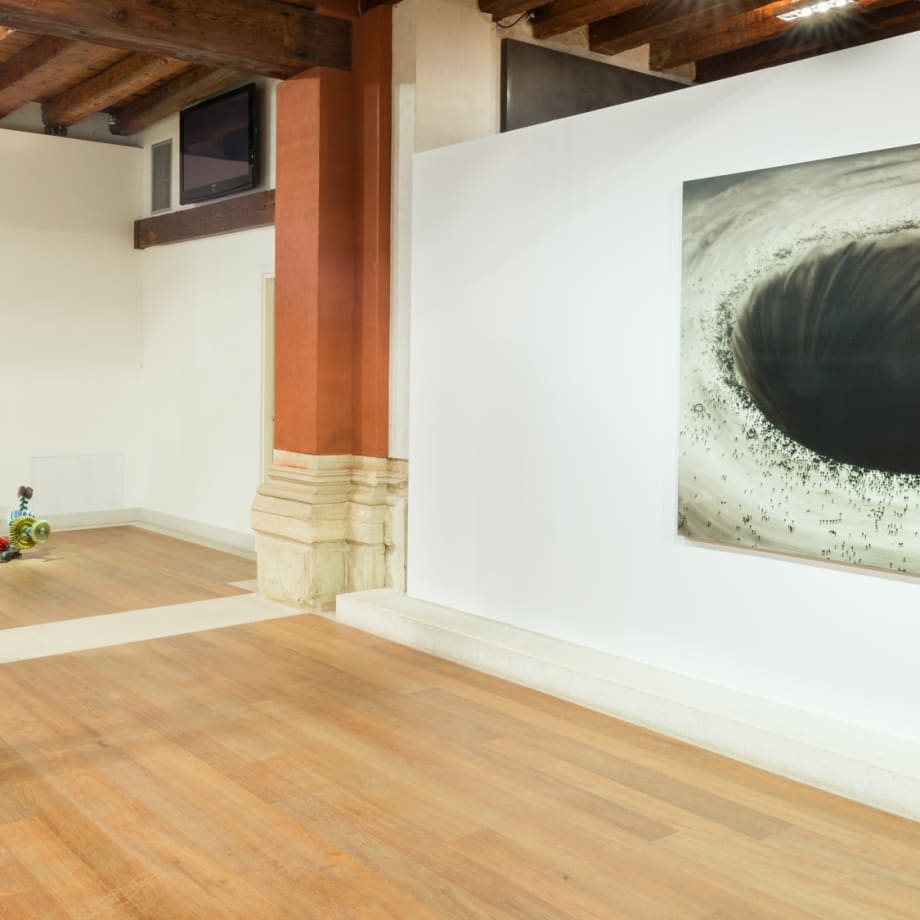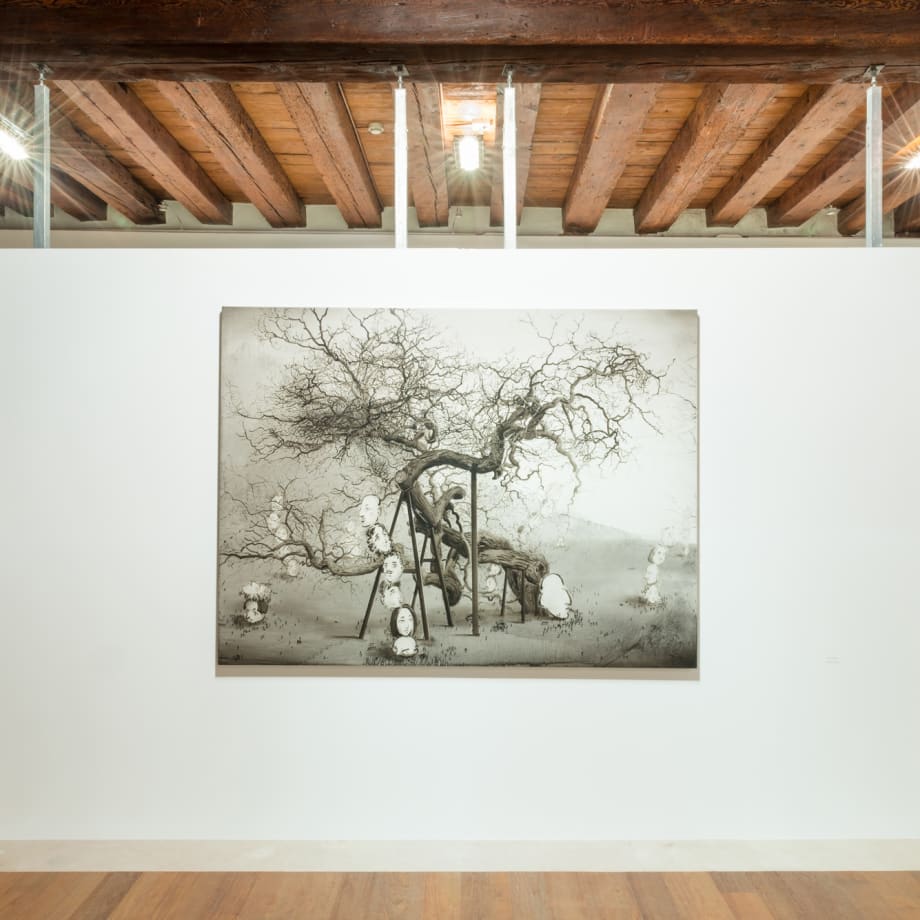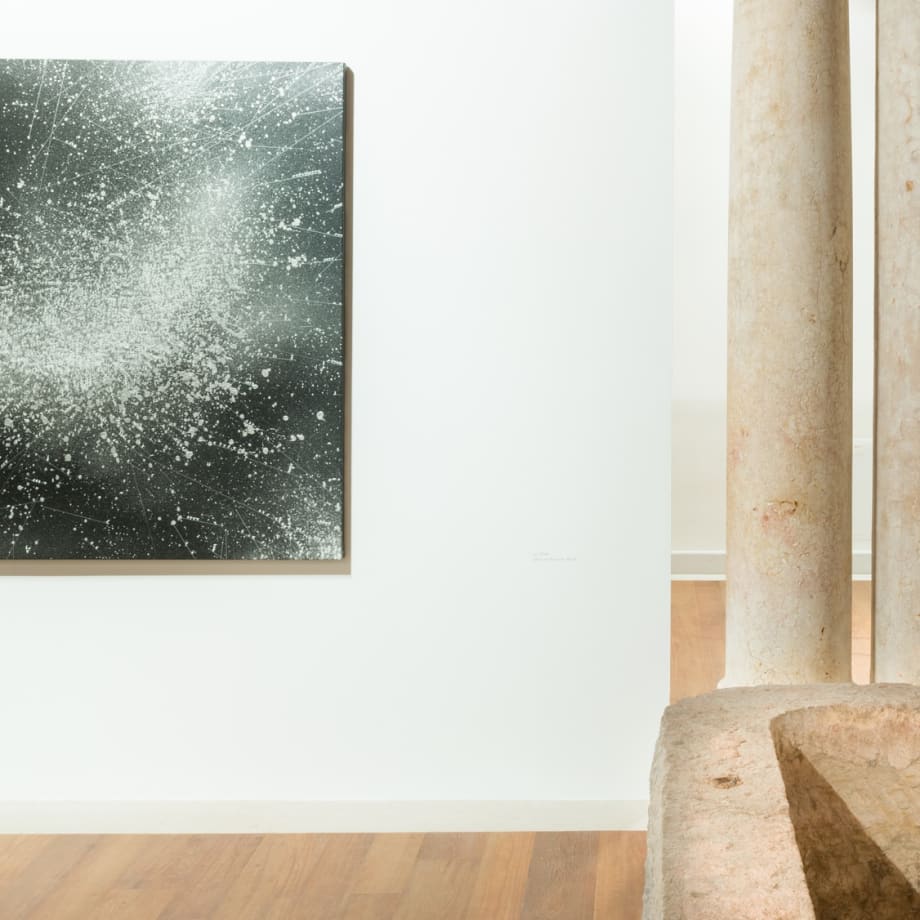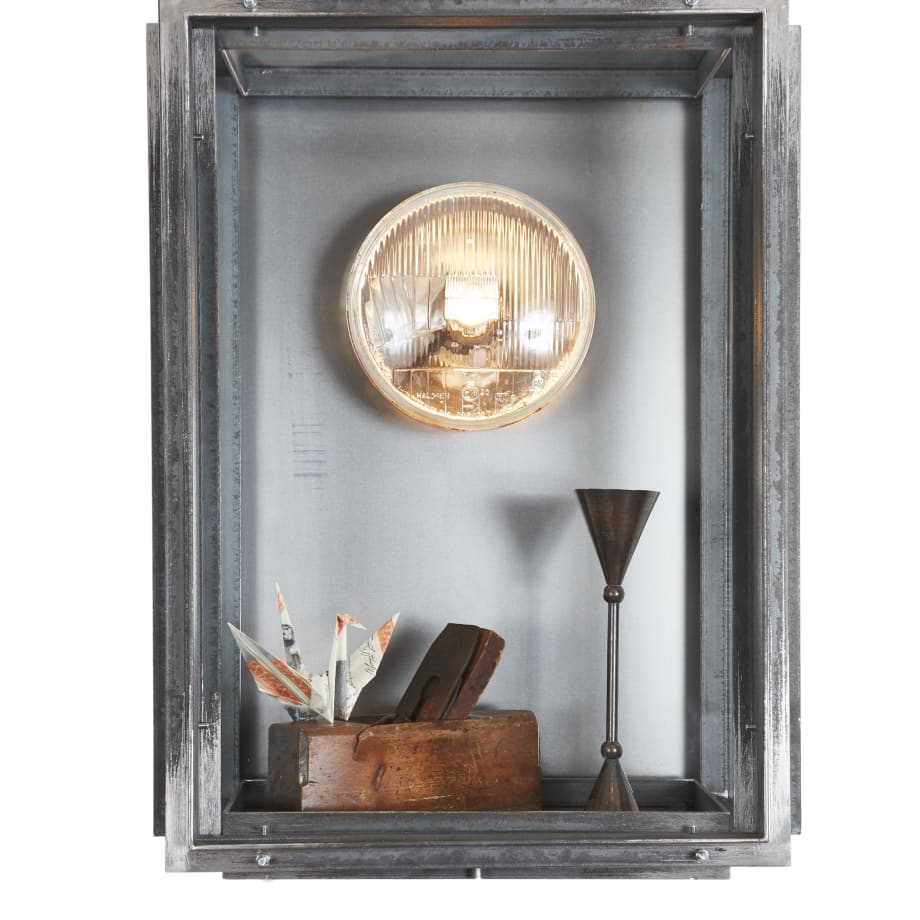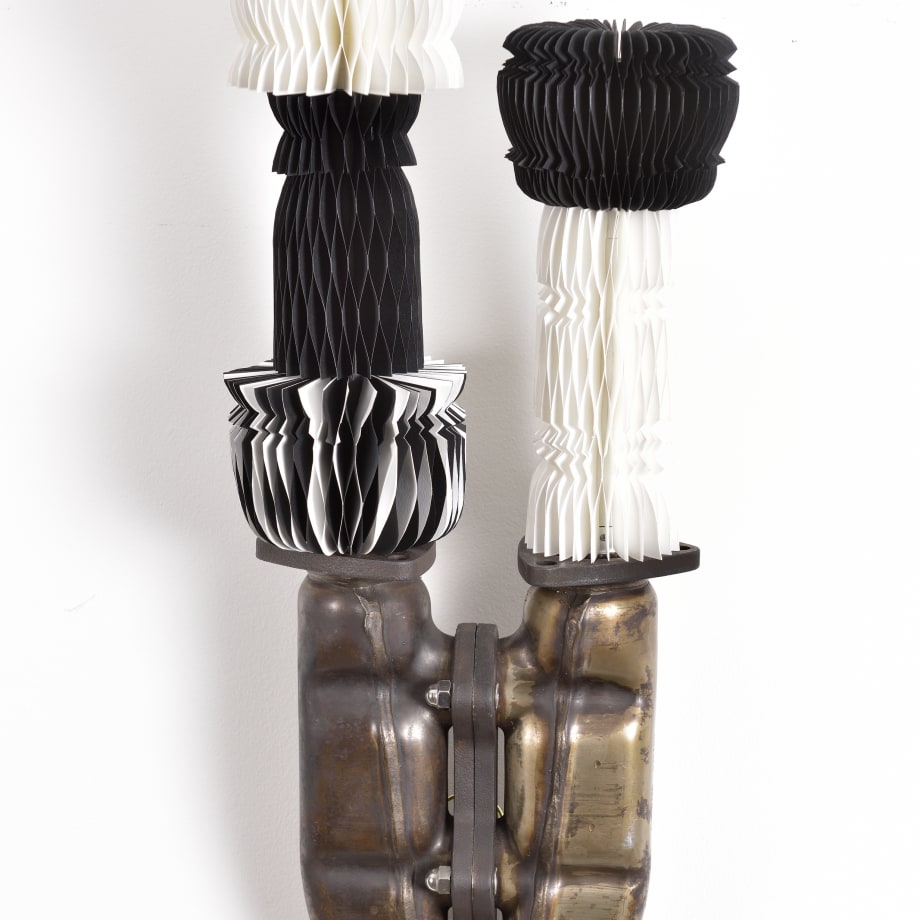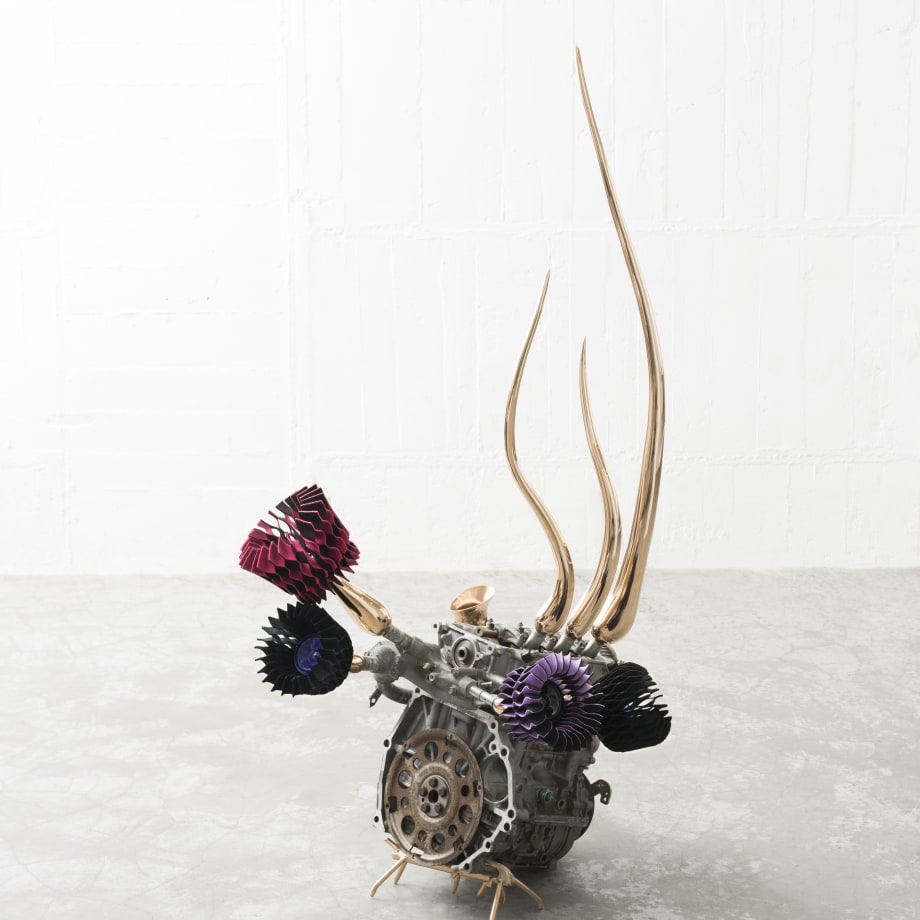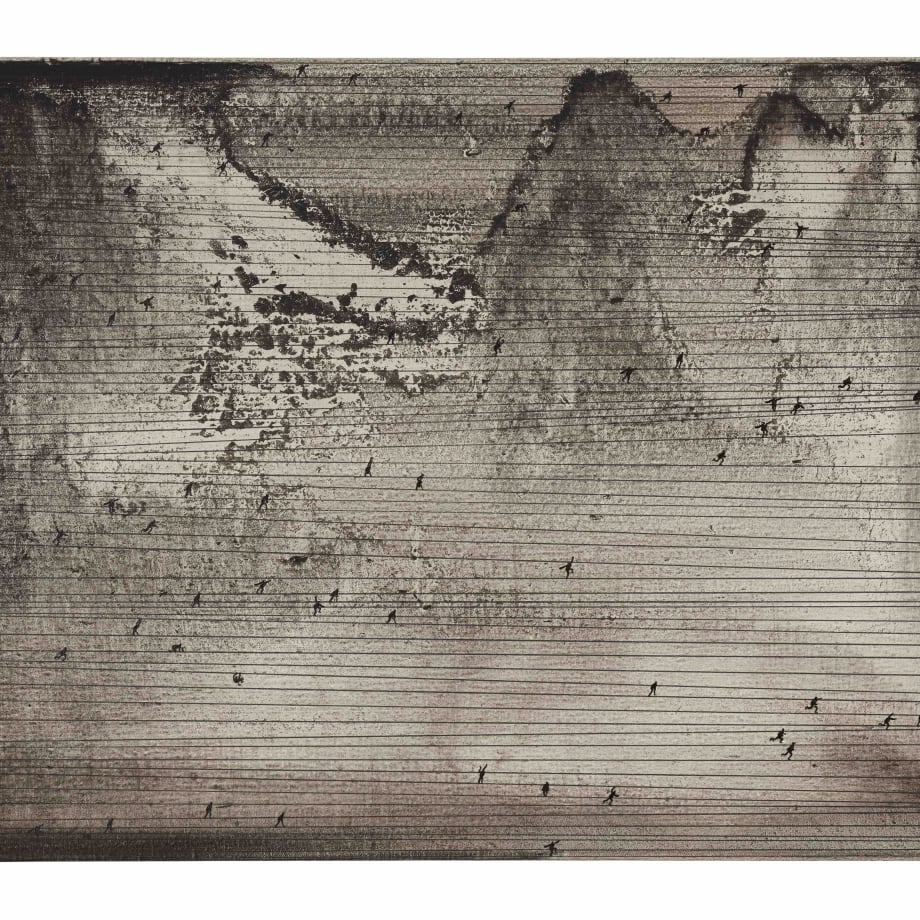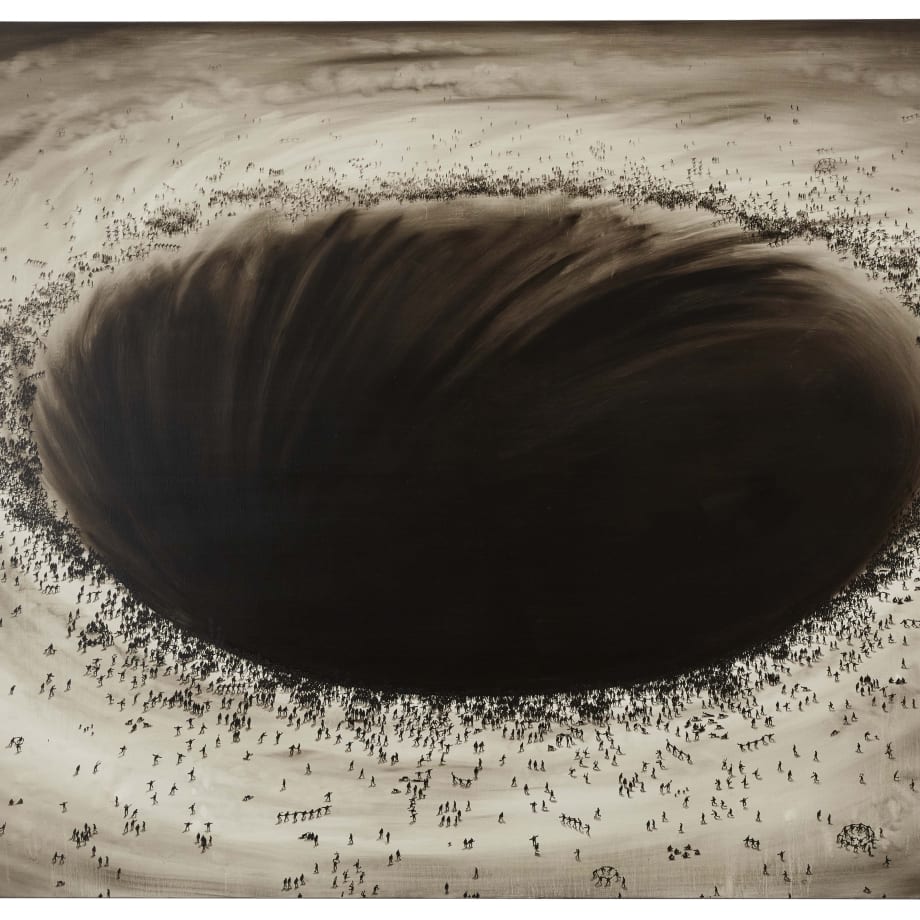rosenfeld porcini with the special collaboration of One Contemporary Art Venice are delighted to present the first dual exhibition of Chinese artist Lu Chao (b.1988) and Japanese artist Keita Miyazaki (b.1983) entitled After the Deluge during the inauguration of Venice Biennale.
Reinterpreting traditional elements of their countries artistic legacy, both artists suggest a critical view on the marginalisation of human beings as a result of the unrestrained expansion of our contemporary societies.
Chao’s early works looked at groups of people herded together often resembling to our Western eyes the current migrant tragedy. All of them are passive, relegated to occupying a very small section of the available space. The theme unmistakably relates to the fear in front of an invisible power. The artist would often use cakes as his theme, although the humour of the setting never blunted the power of the message.
More recently, Chao has reduced his human protagonists to minute figures perilously balanced on high wire. Black Hole and Funambulist No.4 display an idea of a terrestrial power exerting a Mephistophelian control over people but in its place is an extra-terrestrial presence, which in one spectacular drawing, recalls God’s creation of ‘Adam and Eve’ on the ceiling of the Sistine Chapel. However the benevolence and optimism, which underlies the ‘Creation’, is replaced by a far darker vision of authority with the human being perched like a puppet struggling to
negotiate his path through life as he is maneuvered and controlled in his vain search for freedom.
Lu Chao’s works are a wonderfully contemporary take on the ancient Chinese drawing tradition. Although the paintings are all made with oil, the mark making, rigidly in black and white, draws on the great artistic history of his country.
Keita Miyazaki was in Japan during the terrible Tsunami which devastated a part of the country in 2011. Witnessing so much destruction of so many elements of our industrial society profoundly affected him and led him to try and give new life to one of the most common elements of all developed societies: the motor car. Utilising elements from the engines, he uses his expertise as a metal welder to combine them with vividly colored ‘origami’ inspired shapes made out of paper, felt or plastic if the sculpture is destined for an exterior location.
Essentially performing as a classical sculptor where he makes or molds every piece of the work, he has managed to invent a completely new sculptural language. His new series recreates the ‘Vanitas’ of seventeenth century Dutch painting. The artist has created metal wall mounted cases with glass vitrines containing both made and found objects all relating to the fragility of human life and the vanity of so many human preoccupations. Occupying the upper part of the case is an illuminated car headlight, which, in the mind of the artist, acts as a form of divine presence, where in the original works it was a shaft of light carrying the same meaning.
Exhibition schedule:
11 May – 9 July 2017
Fondamenta Sant’Apollonia, Castello, 4312, Venice
